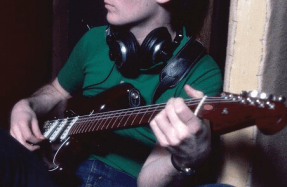
“WE WANTED TO be a band that had heavy guitars but also songs with strong melodies and choruses. That’s the school I grew up in,” Paul Stanley says, reflecting on the birth of Kiss, the group he co-founded some 50 years ago. “It was coming more from the Brill Building kind of writers than head-banging. The idea was to combine some of the old Tin Pan Alley sensibilities with the Beatles’ style of songwriting and make it more guitar-driven, like Led Zeppelin, or the Rolling Stones and the Who. Interestingly, most of it was about rhythm guitar, which is the foundation of everything. Without it, everything falls apart.”
From humble roots in Queens, New York, through equal measures of talent, ambition, hard work and self-belief, Paul Stanley willed himself into becoming a rock star. His Kiss persona is the Starchild after all, and he’s been championed as one of rock’s greatest frontmen. In concert, he’s part game-show host, part gospel preacher, espousing the life-affirming spirit of anthemic, fist-waving rock and roll thunder. More than most guitarists, Stanley embraces his vital role as a rhythm player. Think of him as the bastard child of Keith Richards’ raucous riffery, the arena-rock power-chord majesty of Pete Townshend and the boogie-rock splendor of Humble Pie’s Steve Marriott.
And like all three of those guitarists, Stanley has taken to the task with a mixture of swagger and attitude. His rowdy rhythms and arena-ready riffs on Kiss classics like “Strutter,” “Got to Choose,” “C’mon and Love Me,” “Rock and Roll All Nite” and countless others were the sonic fuel that helped transport four struggling New York City musicians into superstardom and, decades later, the Rock and Roll Hall of Fame.
Throughout Kiss’s storied career, both on record and in concert, lead guitarists Ace Frehley, Vinnie Vincent, Mark St. John, Bruce Kulick and Tommy Thayer have done the heavy lifting as fleet-fingered six-string soloists. But on the rare occasion when Stanley steps up to peel off a guitar solo, it’s always special, memorable and instantly hummable. Neither a flashy soloist nor a speed merchant, Stanley makes each note count. He’s a distinctive stylist plucked from the George Harrison school of guitar playing, who hunkers down and takes the time to meticulously craft picture perfect guitar solos that tell a story within a song. When Stanley chooses to lay down a solo, whether it’s the exquisite Kossoff-flavored slow-hand finery on “Hold Me, Touch Me,” the searing metallic attack on “I Stole Your Love” or the epic David Gilmour–esque sonic flights of atmospheric fancy on “A World Without Heroes,” it’s always melodically inventive and in service to the song.



For much of the band’s ’70s heyday, his arsenal of axes leaned heavily on Gibson guitars,Steinberger and, of course, Gibson. Stanley later aligned with Washburn and Silvertone on the creation of new signature models, but he is now back in the fold with Ibanez and involved in the development and design of his own line.






